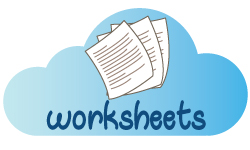Contractions Explained with Definition and Examples
- Grammar Lessons >
- Contractions
Overview of Contractions:
- What Is a Contraction?
- Examples of Contractions
- Contractions in Sentences
- Types of Contractions
- Use of Contractions
- Contractions in Tag Questions
- Contractions in Informal Letters
- Contractions in Dialogues
- Contractions in Advertisement Slogans
- Understanding Contractions and Possessives
- Let's, Lets, and Let us
- It's and Its
- They're, There, and Their
- Contractions - Quiz
What Is a Contraction?
The word contract means to shorten or make smaller. A contraction is a word made by shortening and combining two or more words. Most of the time, a contracted word has an apostrophe in it.
Examples of Contractions
I'm (I am), let's (let us), here's (here is), they'll (they will), isn't (is not), wanna (want to or want a)
Contractions in Sentences
You could've worked even harder. (could have)
This isn't what I am looking for. (is not)
Matt won't come this week. (will not)
Types of Contractions
Positive Contractions
A positive contraction denotes a positive meaning.
Examples:
We've won the match. (we have)
There's a restaurant near my house. (there is)
Negative Contractions
A negative contraction denotes a negative meaning.
Examples:
We aren't going to Florida this week. (are not)
You needn't worry about your stay. (need not)
Informal Contractions
Informal contractions are words like gonna and wanna, which people use when speaking casually. Most English-language learners think informal contractions are slang, but they are not exactly slang. They only sound like slang. Unlike other contractions, we don't use informal contractions in any forms of writing whatsoever.
Examples:
Watcha (contraction for what are you)
Watcha doing today?Kinda (contraction for kind of)
The new teacher kinda looks like my father.
Use of Contractions
Contractions are informal "shortcuts" that we mostly use in our everyday spoken language. However, in written English, we don't generally use contractions, unless they serve a specific stylistic purpose.
Quick tip: It's best not to use contractions in formal writing as doing this will hinder your purpose rather than help it.
Contractions in Tag Questions
Contractions are most commonly used in tag questions. If the statement is positive, we use a negative tag which obviously has a negative contraction, and vice versa.
Examples:
You are Mr. Bean, aren't you?
You are not Mr. Bean, are you?
Contractions in Informal Letters
We sometimes use contractions in writing when we want to give it a friendly tone. An example of this is informal letters or emails.
Examples:
I'm writing to invite you to my birthday party. (from an invitation letter)
Don't worry if you can't make it this week. (asking a friend for a favor)
Contractions in Dialogues
Another instance when we use contractions in writing is a dialogue in a novel or play. Using contractions enables the reader to better understand a character's feelings.
Examples:
Character 1: It's such a beautiful day, isn't it?
Character 2: Absolutely! It can't get more beautiful!
Character 1: Jane, you should've joined us for the party.
Character 2: You better know it's been ages since I stopped attending parties; they're chaos at its worst.
Contractions in Advertisement Slogans
We also use contractions to write shorter and more precise advertisement slogans.
Examples:
If you can't find it here, it doesn't exist. (from an advertisement of a shoes store)
I'm loving it. (from an advertisement of a restaurant)
There are some things that money can't buy. (from an advertisement of a financial institution)
Click on the Circles to Spot the Six Contractions
Understanding Contractions and Possessives
Because contractions and possessive nouns appear similar, students are likely to confuse one with the other. While both possessive nouns and contractions have an apostrophe, these are two distinctly different things serving unique functions. One shows ownership or possession, and the other is the shortened version of two words.
Examples:
It is only a five-minute walk to Liam's school. (possessive noun)
Liam's school means the school where Liam studies or the school of Liam.
Ana said she'll prepare dinner for all of us. (contraction)
"She'll" is the contracted form of "she will".
Let's, Lets, and Let us
The expressions "let's", "lets", and "let us" can drive many students out of their minds. We are now going to explain how to use each of these correctly.
"Let's" is a contraction for "let us" that is used for suggestion. Don't confuse this let us with the let us used for request.
Examples:
Let's play soccer.
Let's eat outside tonight.
"Lets" is the third-person singular present tense form of "let", which means to allow someone to do something.
Examples:
Kevin's mom lets him play for two hours every day.
Mr. Peter lets his students work on their own.
"Let us" is used to request someone for something. Please note the expression "let us" when used to denote a request is not contracted.
Examples:
Mr. Benjamin, kindly let us go home a little early today.
Mom, please let us watch a movie today.
It's and Its
Nearly every English student has doubts telling between "it's" and "its". The problem is using one in place of the other can make a hash of the sentence, and therefore it's important for students to know how to use the two correctly. Here's how to distinguish between the two:
"It's" is a contraction for "it is" or "it has".
Examples:
It's probably going to rain in the evening. (contraction for it is)
It's been two years since I met Grandma. (contraction for it has)
The word "its", on the other hand, is a possessive pronoun meaning "belonging to semething already mentioned". Used to show ownership, the possessive pronoun "its" modifies a noun.
Examples:
Our new house has its own swimming pool.
Every country has its unique culture.
They're, There, and Their
Another set of often-confusing words that students must be clear about is they're, their, and there. Here's how to make yourself conversant with each of the words:
They're is a contraction for they are.
Examples:
I don't think they're interested in the property.
I just met our new classmates; they're a great bunch of boys.
There means at that place or something is in a place.
Examples:
I had lunch there.
There is a park near the school.
Their means belonging to them.
Examples:
Their school is in New York.
This is their new office.
Take a Contraction Quiz Now!

Hone your skills using our free printable Contractions Worksheets.

